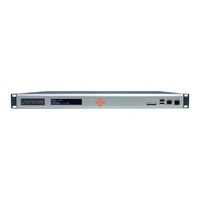Lantronix SLC 8016 Manuals
Manuals and User Guides for Lantronix SLC 8016. We have 1 Lantronix SLC 8016 manual available for free PDF download: User Manual
Lantronix SLC 8016 User Manual (425 pages)
Advanced Console Manager
Table of Contents
-
Warranty2
-
Contacts2
-
-
-
-
AC Input42
-
-
-
Navigating51
-
Next Step61
-
-
Requirements69
-
-
DNS Servers75
-
Gateway76
-
IP Filter79
-
Routing84
-
VPN Settings85
-
Security102
-
FQDN List114
-
-
7 : Services
116-
-
Audit Log118
-
Smtp118
-
System Logging118
-
Ssh119
-
Telnet119
-
Logging Commands120
-
Phone Home120
-
SSH Commands120
-
Snmp120
-
Version 3123
-
V3 User Trap124
-
NFS and SMB/CIFS124
-
-
Browser Issues130
-
Date and Time133
-
Web Server135
-
Consoleflow140
-
-
Manage Files153
-
9 : Device Ports
155-
Permissions155
-
I/O Modules156
-
Device Status157
-
Device Ports158
-
-
IP Settings164
-
Data Settings165
-
Device Commands176
-
-
Local Logging177
-
NFS File Logging177
-
Syslog Logging178
-
Local Logging181
-
NFS File Logging181
-
Syslog Logging181
-
Logging Commands182
-
-
Console Port182
-
Xmodem187
-
Scripts193
-
Scripts195
-
Script Commands200
-
Primary Commands201
-
Example Scripts206
-
Sites222
-
-
Dial in225
-
Dial-Back226
-
Dial-On-Demand227
-
CBCP Server229
-
CBCP Client229
-
Key Sequences230
-
-
-
Devices - Rpms231
-
Rpms - Outlets240
-
-
RPM Commands244
-
-
-
11 : Connections
245-
-
Terminal Server245
-
Console Server247
-
-
-
-
-
User Rights253
-
Nis262
-
Ldap265
-
Radius270
-
Kerberos274
-
Tacacs277
-
Groups282
-
SSH Keys285
-
Custom Menus290
-
-
13 : Maintenance
294-
-
Site Information297
-
SLC Firmware297
-
Manage Files301
-
System Logs302
-
Audit Log304
-
Email Log305
-
Diagnostics306
-
Status/Reports309
-
Events314
-
Lcd/Keypad316
-
Banners317
-
-
-
-
-
LDAP Commands342
-
NIS Commands348
-
RADIUS Commands349
-
TACACS+ Commands350
-
CLI Commands357
-
Device Commands365
-
Events Commands375
-
Group Commands376
-
Logging Commands380
-
Network Commands383
-
Routing Commands393
-
RPM Commands393
-
Script Commands396
-
SD Card Commands398
-
Site Commands401
-
SSH Key Commands402
-
Status Commands405
-
VPN Commands412
-
Xmodem Commands415
-
-
Advertisement
Advertisement
